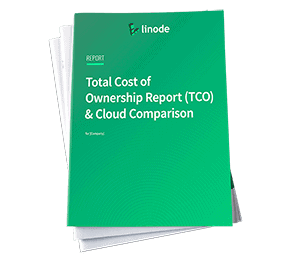Filters
Object Storage - Get Started
Updated
S3-compatible Linode Object Storage makes it easy and more affordable to manage unstructured data such as content assets, as well as sophisticated and data-intensive storage challenges around artificial intelligence and machine learning.
Enable Object Storage
Object Storage is not enabled for a Linode account by default. All that is required to enable Object Storage is to create a bucket or an Object Storage access key. To cancel Object Storage, see the Cancel Object Storage section.
NoteBilling for Object Storage starts when it is enabled on your account, regardless of how it is enabled. For example, if you enable the service by creating an access key, but you have not yet created a bucket, the $5 monthly flat rate (prorated) for Object Storage is charged for your account. Cancelling Object Storage stops billing for it.
Object Storage Key Pair
Log into the Linode Cloud Manager.
Note
Object Storage is not available in the Linode Classic Manager.Click on the Object Storage link in the sidebar, click the Access Keys tab, and then click the Create an Access Key link.
A prompt appears asking you to confirm that you’d like to enable Object Storage. Click Enable Object Storage.
The Create an Access Key menu appears.
Enter a label for the key pair. This label is how you reference your key pair in the Linode Cloud Manager. Then, click Submit.
A window appears that contains your access key and your secret key. Write these down somewhere secure. The access key is visible in the Linode Cloud Manager, but you are not be able to retrieve your secret key again once you close the window.
You now have the credentials needed to connect to Linode Object Storage.
Create a Bucket
The Cloud Manager provides a web interface for creating buckets. To create a bucket:
If you have not already, log into the Linode Cloud Manager.
Click on the Object Storage link in the sidebar, and then click on Add a Bucket.
Note
If you have not created an access key or a bucket before, you are prompted to enable Object Storage.The Create a Bucket menu appears.
Add a label for your bucket. See the Bucket Name section for rules on naming your bucket.
Choose a cluster location for the bucket to reside in.
Note
A cluster is defined as all buckets hosted by a unique URL; for example:us-east-1.linodeobjects.com,ap-south-1.linodeobjects.com, oreu-central-1.linodeobjects.com.Click Submit. You are now ready to upload objects to your bucket.
Upload an Object to a Bucket
If you have not already, log into the Linode Cloud Manager.
Click on the Object Storage link in the sidebar. A list of all your buckets appears. Click on the bucket you’d like to begin uploading objects to.
Your bucket’s Objects Listing Page appears. In the example, the my-example-bucket does not yet contain any objects. You can use the Upload Files Pane to drag and drop a file from your computer to your object storage bucket.
Note
You can drag and drop multiple files to the Upload Files Pane at one time.You can also click on the Browse Files button to bring up your computer’s file browser and select a file to upload to your bucket.
When the upload has completed, your object is visible on the Objects Listing Page.
Note
Cancel Object Storage
To cancel Object Storage, you must first delete all of your buckets. To delete a bucket, the bucket must be empty. For buckets that contain large amounts of objects, consider employing lifecycle policies to delete the objects.
Caution
If you have removed all of your buckets, but you have not also cancelled the Object Storage service, your account is still billed at a flat rate of $5 per month (prorated) for the service. Make sure that you complete each step of this section to fully cancel the Object Storage service and to stop billing for it. For more information, see our Pricing and Limitations guide.Once you’ve deleted all of your buckets, navigate to the Account page in the left-hand navigation. Click on the Settings tab. In the menu, you should see a setting for Object Storage:
Click Cancel Object Storage. A prompt appears asking you to confirm the cancellation. If you still have active buckets, you are prompted to delete them.
This page was originally published on



